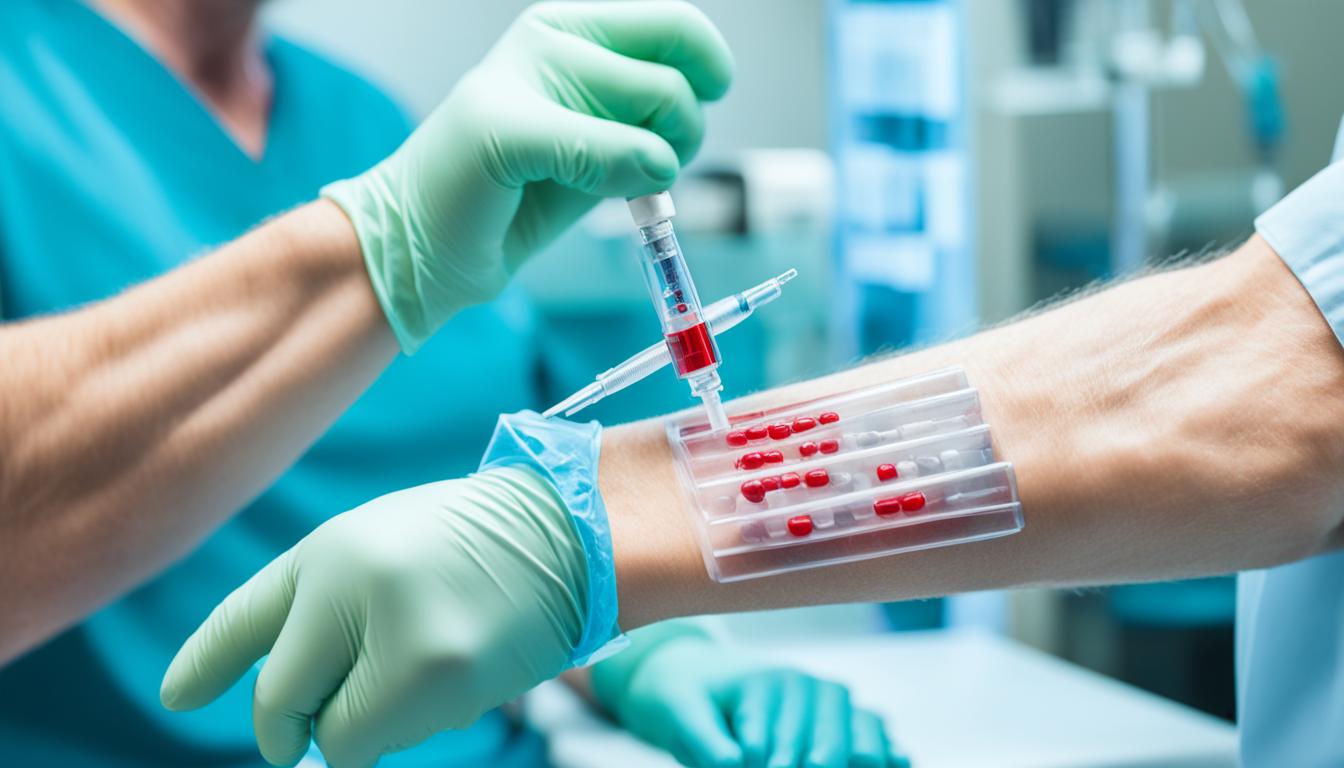Ulnar-sided wrist pain affects daily life a lot. It happens on the wrist’s inner side, next to the ulna bone. This bone is key for wrist stabilization and movement. Various issues can lead to ulnar wrist pain, like ulnar impaction syndrome and wrist fractures. Plus, problems such as TFCC injury and arthritis can also cause pain.
Diagnosing this pain needs advanced tests like MRI and CT scans. Doctors also use EMG and NCS to understand nerve function. X-rays show bone problems, and these tools help find the root of the pain.
For treatment, a tailored plan is best. This could include resting, certain medications, or physical therapy. For severe pain, surgery might be necessary. But, discussing options with a wrist expert is crucial. They can create a plan that suits you.
Key Takeaways:
- Ulnar-sided wrist pain can severely impact daily activities and quality of life.
- Common causes include ulnar impaction syndrome, fractures, and TFCC injury.
- Diagnosis uses tests like MRI and X-rays to understand the issue.
- Treatment varies but always starts with determining the best path forward.
Stem Cell Therapy for Ulnar-Sided Wrist Pain
Ulnar-sided wrist pain needs an effective treatment option that doesn’t require surgery. Stem cell therapy is a promising treatment. It’s a minimally-invasive procedure that helps with conditions such as TFCC tear. It offers regenerative therapy that can ease symptoms.
Stem cells are used because they promote the recovery and regeneration of tissues. For TFCC tear, stem cell therapy uses the patient’s own cells. This helps the damaged area regrow. Stem cells are taken from the bone marrow and then injected into the wrist joint. This process helps reduce pain and inflammation quickly.
Stem cell therapy has a big advantage. It doesn’t have the risks or long recovery time of surgery. This non-surgical option lets people go back to their normal lives faster. It’s a top choice for those wanting a less invasive treatment.
To visualize the potential of stem cell therapy for ulnar-sided wrist pain, take a look at the image below:
The image shows how stem cell therapy targets TFCC tear and other wrist pain. It uses the body’s own regenerative powers. This means better recoveries and a quicker return to life without pain.
In the next section, we will explore the benefits of minimally-invasive treatments for ulnar-sided wrist pain. We’ll see how these methods are better than the older surgical ways.
Benefits of Minimally-Invasive Treatment for Ulnar-Sided Wrist Pain
People with ulnar-sided wrist pain can get a lot better with minimally-invasive treatments. Options like stem cell therapy and SCP therapy help a great deal. They make recovery faster and lower pain and boost movement more than surgery does.
Stem cell therapy is all about using the body’s healing power to fix the wrist. It uses the person’s own stem cells. The therapy helps heal the wrist naturally. And this often leads to less pain and better wrist movement. SCP therapy works in a similar way but uses concentrated platelets. Both are safe, with very few side effects. This means those who opt for these treatments can get back to normal life quickly.
Sometimes, after the main treatment, doctors might suggest special exercises. This is to speed up healing and bring back healthy tissue. Together, these treatments form a strong option against surgery. They help with pain and wrist movement a lot. Plus, they don’t need big cuts or major operations.

